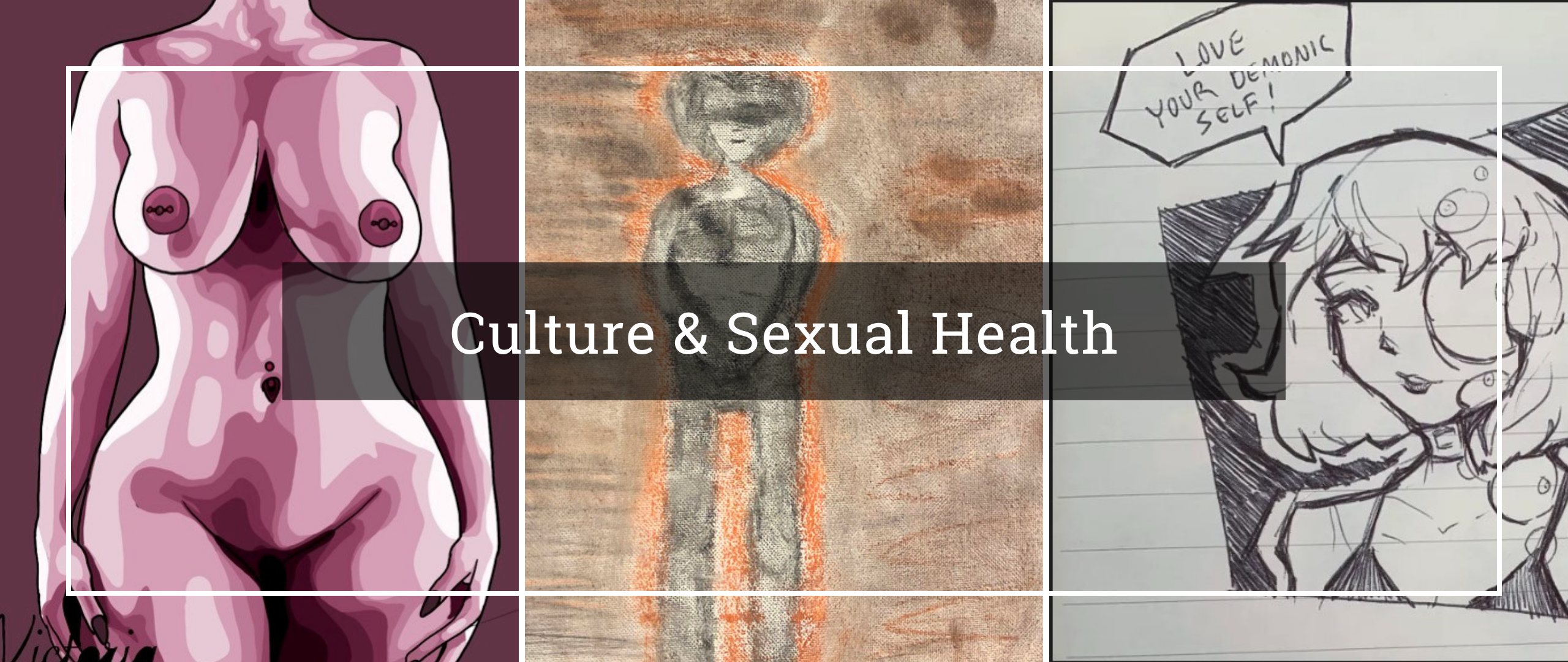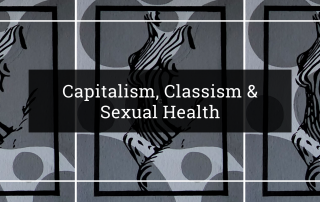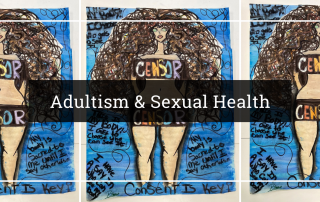
Written and researched by Tomei Kuehl
Accompanying artworks selected in partnership with Talia Cardin, Youth-facilitator to the Youth Sexual Health Program Board
Culture:
“Culture encompasses religion, food, what we wear, how we wear it, our language, marriage, music, what we believe is right or wrong, how we sit at the table, how we greet visitors, how we behave with loved ones and a million other things.”
– Definition provided by Cristina De Rossi, anthropologist
Sexuality education in the United States is influenced by cultural changes. The early 1910s saw the government involved in disease prevention programs because of the fear of sexually transmitted infections among soldiers. The 1920s saw government funding for school sexual health education, with a focus on marriage, purity, and responsibility and STI prevention. The 1940s and 1950s saw the emergence of Family Life Education programs that focused on marriage preparation and discouraging premarital sex. The 1960s saw the advent and availability of birth control with the emergence of the Pill. The 1970s saw liberalization of abortion laws, increasing reproductive health access for some. Sexuality education in schools was a reaction to the sexual revolution of this time. The 1980s gave rise to the AIDS epidemic and teen pregnancy and influenced a disease prevention approach in schools. The 1990s saw the development of the first ever Guidelines for Comprehensive Sexuality Education K-12, which served as benchmarks for a successful sexual education course. The 1990s also saw the proliferation of abstinence only curriculum and federal funding for abstinence only education. All these pieces continue to play out today and result in a disparate approach to sex education, with access dependent on the politics of a particular community, school, or classroom.





